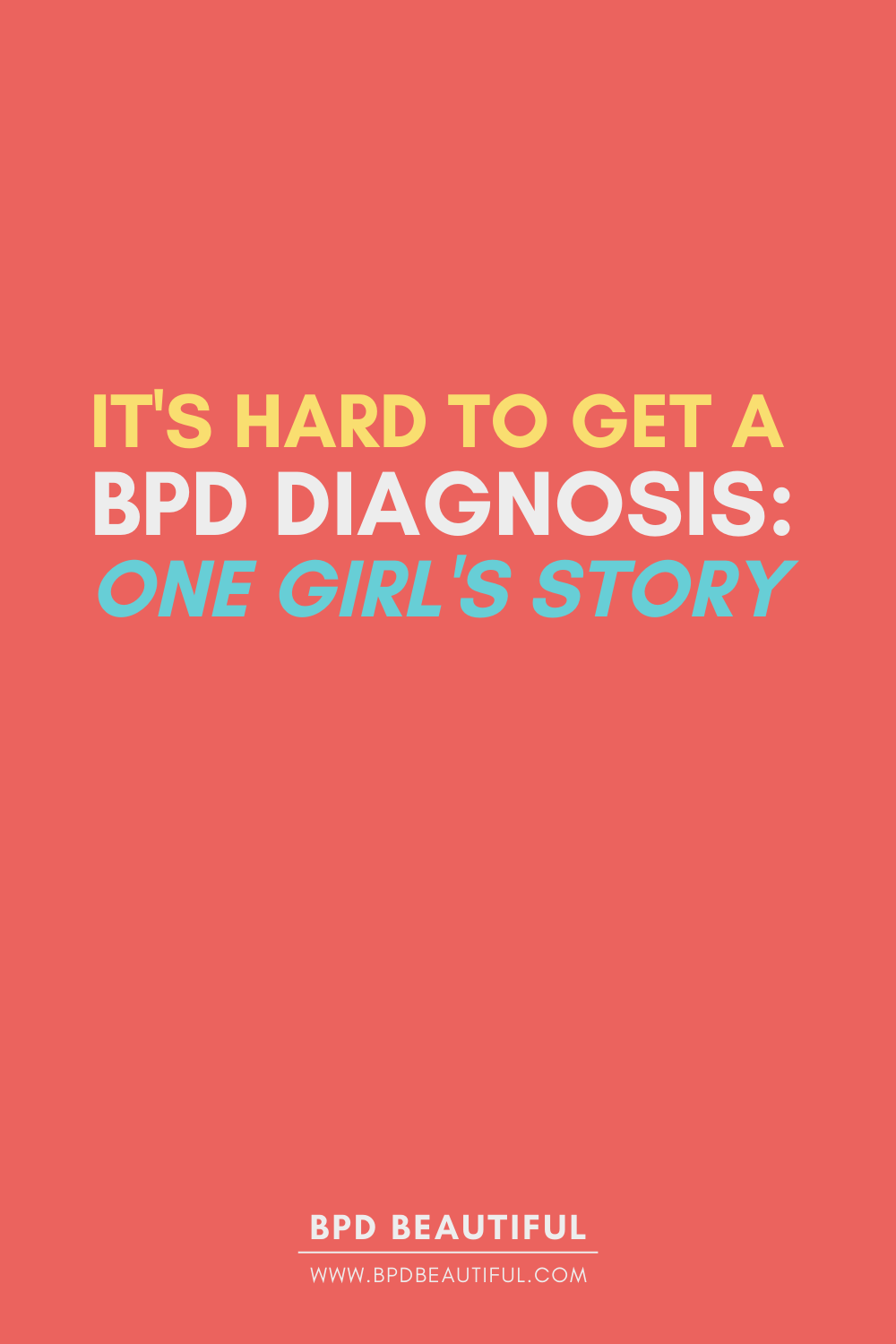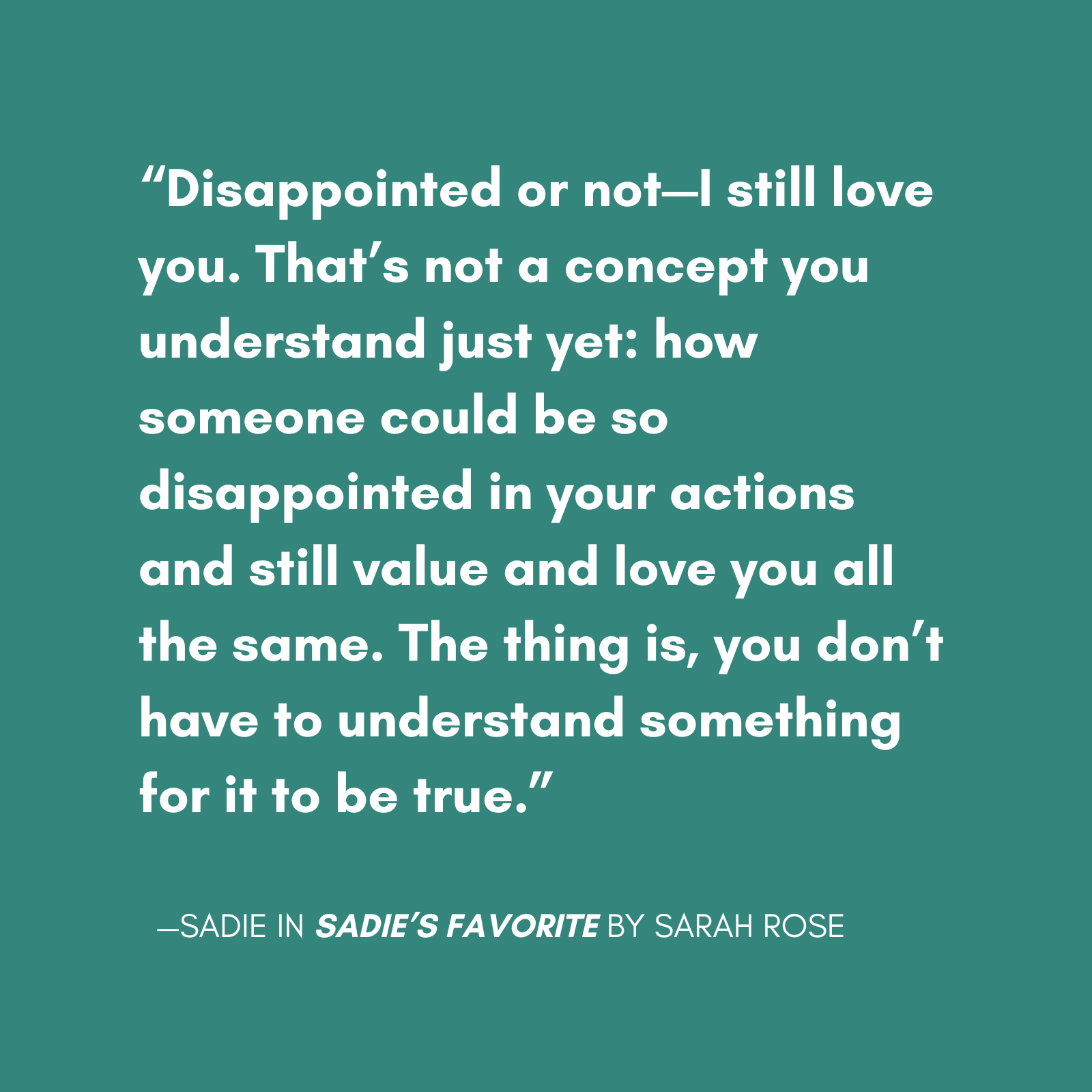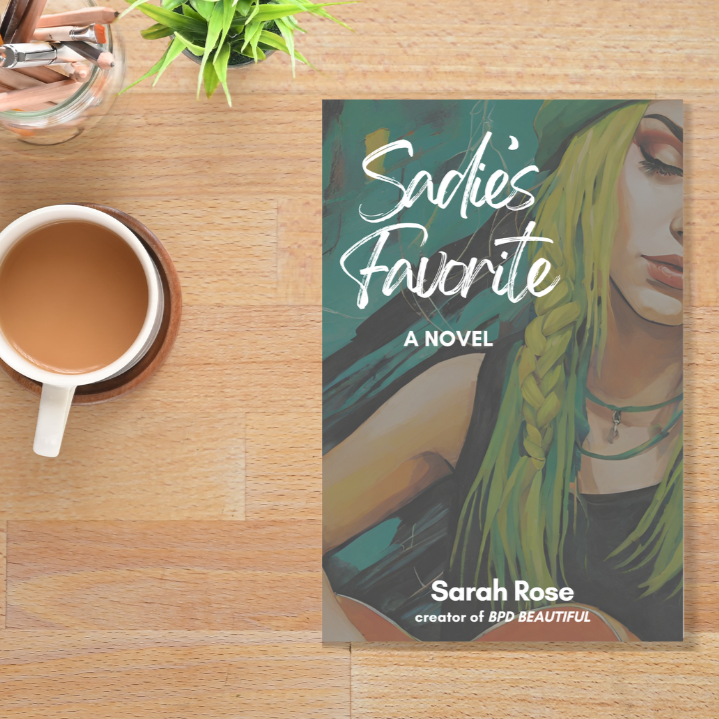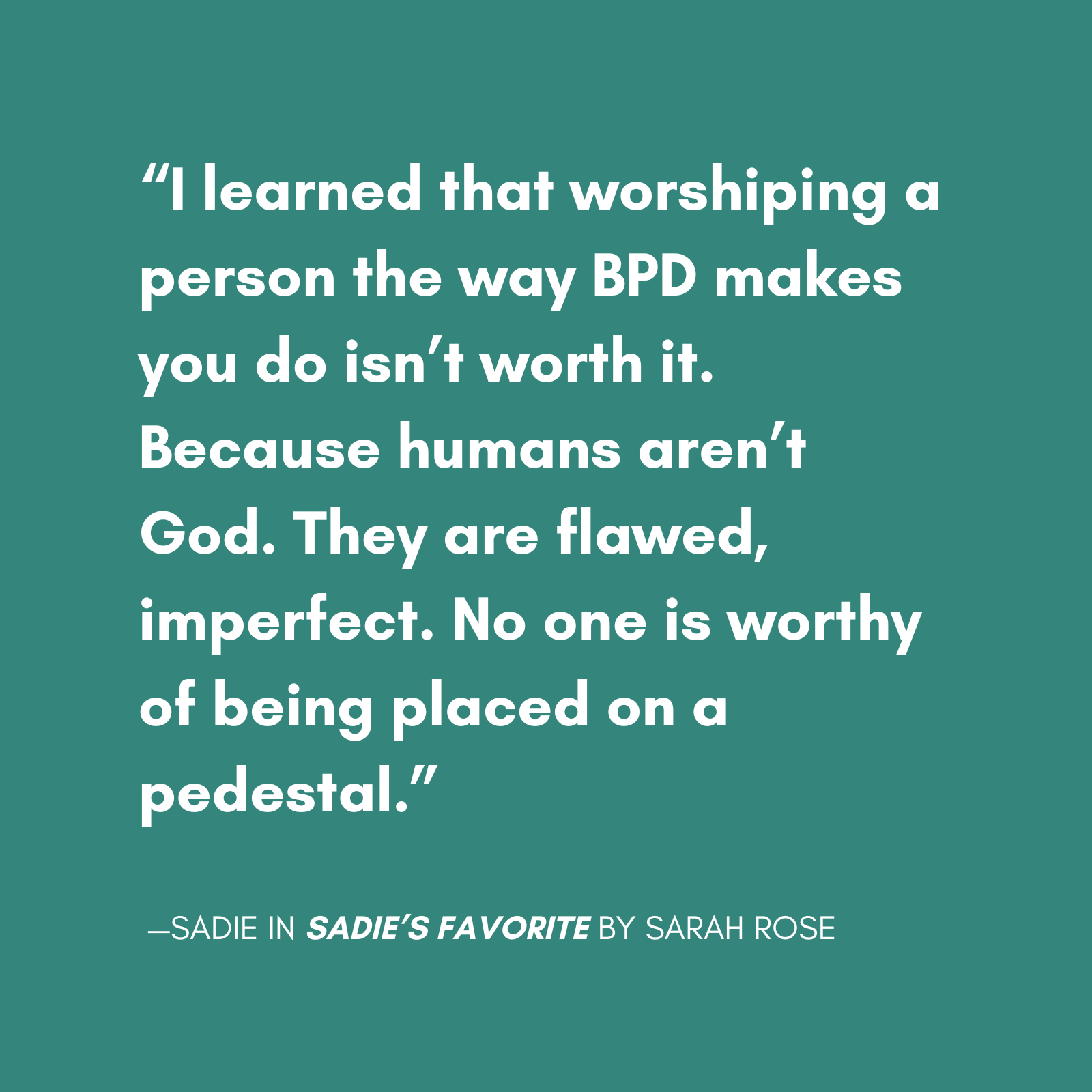Trigger Warning: BPD stigma, stigma by mental health clinicians
Are you looking for books about BPD? Check out Adrianna Rangel’s latest book – Book of Thoughts.
Living with BPD Stigma
Here’s the real truth about living with borderline personality disorder: you are going to be stigmatized. By people online. By film or TV producers. By mental health clinicians. By strangers. Maybe even by your own family and friends. There’s no way around it. However, as someone who lives with BPD, one group in particular stands out to me: mental health clinicians. Why is it that almost every single person I know with BPD (& I know lots) has a story like our featured guest, Adrianna Rangel?
Why is it that mental health professionals—people we should be able to get treatment from, are refusing to call us back, abruptly ending their services with us or are otherwise brushing us off when we only just admit out loud, ‘I think I have borderline personality disorder’ or are up front about our BPD diagnosis? As hard of a condition as borderline personality disorder is to both live & deal with, it’s treatable. Contrary to old beliefs in the medical world, recent studies of BPD have confirmed that not only is treatment is possible but BPD also has a high recovery success rate.
Research conducted by the National Institute of Mental Health shows:
- After two years, more than 50% of BPD patients recover.
- After 10 years, more than 80% of BPD patients recover.
- 88% remain in recovery.
The stigmatizing treatment from mental health experts needs to end. Up to 10% of people with BPD will die by suicide. If someone with borderline personality disorder is seeking help, they need to be able to get that help so they don’t become a statistic. Even if their symptoms are extreme, frustrating and make a therapist’s job all the harder.

As a BetterHelp affiliate, we receive compensation from BetterHelp if you purchase products or services through the links provided.
To change things, the BPD community needs to come together. We need to be open about our diagnosis and experience. We also need to be willing to take accountability and not use BPD as an excuse to stay stuck in our misery or remain abusive to people we love. This way we can gradually shift mental health professionals’ and others’ beliefs overtime and we can show them how capable we are of getting better.
Books About BPD: “Book of Thoughts”
Our featured guest today, Adrianna, has done her part to spread borderline personality disorder awareness. She’s done that by writing a memoir / poetry book about BPD called Book of Thoughts. UPDATE 5/2022: At the time of originally writing this, there was a kickstarter campaign to fund the book. The campaign was successful thanks to over 80 backers. Book of Thoughts is now available for pre-order (expected to ship in June 2022). It contains 150+ pages of poems, diary entries and beautiful artwork.
Learn more about or order Book of Thoughts on Adrianna’s website here.
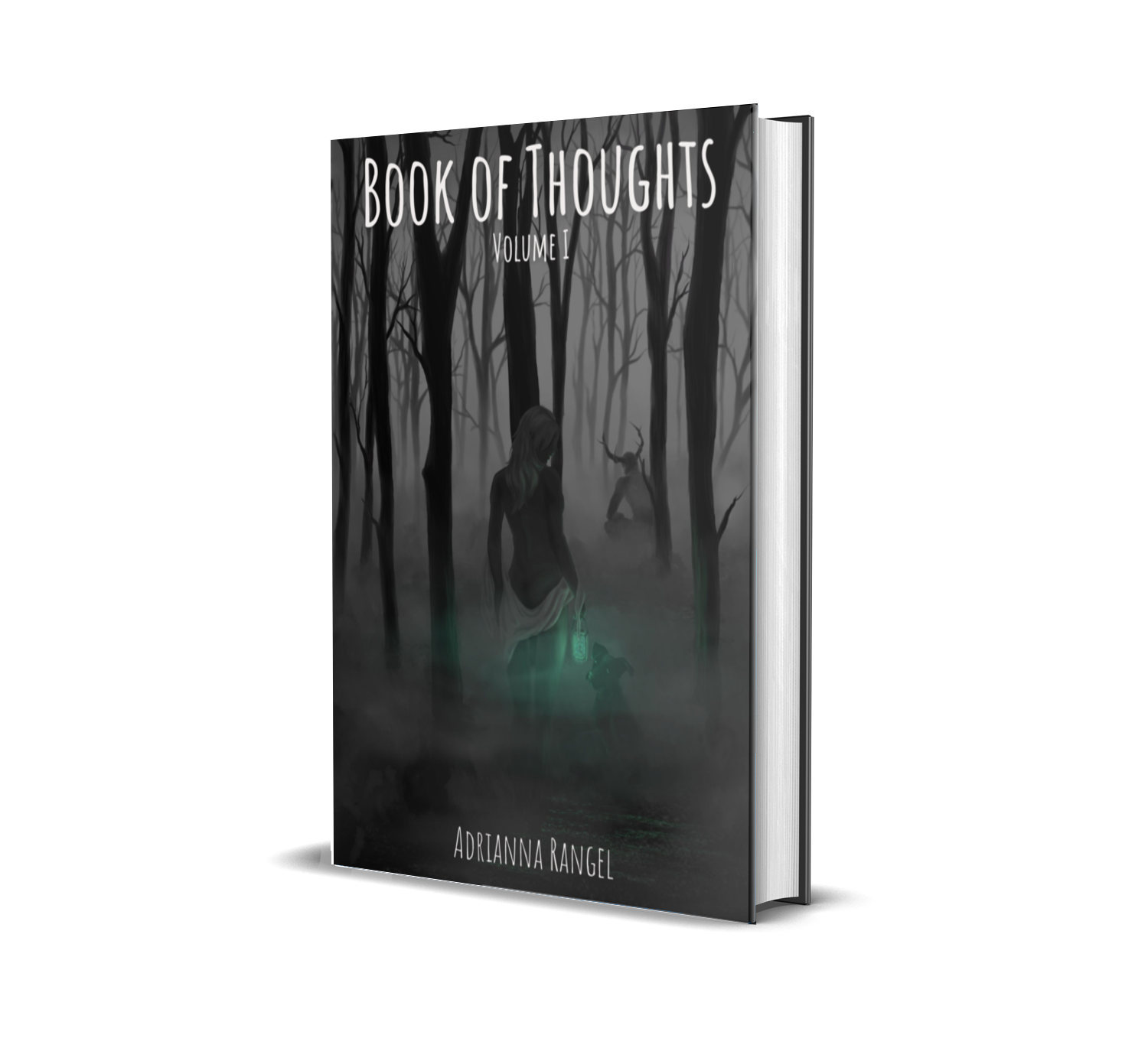
Without further ado, here is our first ever Q+A at BPD Beautiful with author and fellow BPD warrior Adrianna Rangel.
Finish this sentence. “Borderline personality disorder is…”
This actually gave me inspiration to write. This is what I wrote:
BPD is: Not wanting to get out of bed because you’re so depressed you don’t want to move.
BPD is: Not wanting to look at your phone because you’re embarrassed of how you reacted the night before.
BPD is: Wanting to die because you want the pain to stop, not because you want to stop living.
BPD is: Waking up in your favorite person’s bed the next morning after you caused an outrageous scene because it’s the only place you feel safe.
BPD is: Emotionally draining, for all parties involved – ask every previous boyfriend of mine.
BPD is: Constant paranoia and accusations.
BPD is: Crying in agonizing pain, yet feeling numb at the same time, in bed and not knowing what the next step is to take.
BPD is: Wanting stability so bad and thinking you don’t have it, then losing what was your stability, to only be unstable.
BPD is: Constant “I’m sorry’s.”
BPD is: Spiraling out of control and not being able to stop.
BPD is: A constant emotional rollercoaster.
BPD is: Isolating.
BPD is: Draining.
BPD is: My diagnosis, but I am fighting to not be defined by my BPD.
How long ago did you receive your BPD diagnosis?
I was diagnosed with BPD on January 11th, 2021, but I’ve known since 2019.
What was involved in getting diagnosed with borderline personality disorder? Were you ever misdiagnosed?
I will copy the prelude of my upcoming book about BPD here:
After I graduated with my Master’s Degree, I went into a full-blown BPD episode; although, this isn’t what I called it at the time. I was ecstatic, on cloud-nine, and euphoric that THIS girl, me, Adrianna Rangel, graduated with a Masters Degree from a well-known school, but I was also scared and numb. I felt paralyzed. My entire world changed overnight.
“What was I going to do now?”
“Am I going to continue to law school?”
“Are we (my boyfriend and I at the time) going to move to Utah?”
“Did I really just finish all my schooling?”
“What do I do not being in school?”
“Is this it? Is this all there is to life?”
“Now what?”
My mind was racing between thoughts at a million miles a second and I immediately became overwhelmed and shut down. I went into a profound, dark spiral. I broke up with my boyfriend of four years. I started drinking every day and every night. I was meeting up with random boys from apps who I didn’t know. I was completely unhinged.
My friend, at the time, was diagnosed with Borderline Personality Disorder and she told me that I was acting exactly the way she does and that I am behaving similarly to someone who has BPD. I looked up the personality disorder, and I denied it and became enraged with her, but deep down I knew it made sense and that was most likely what was wrong with me.
I made an appointment with my psychiatrist and I told her I needed to be put on a mood stabilizer or something that would help keep me from my mood changing multiple times a minute and hour. I was put on an antipsychotic. While that came with its own problems, it did help keep me from having drastic mood changes. I was due for an annual appointment with her, so we tried a few different medications for a few months until I saw her.
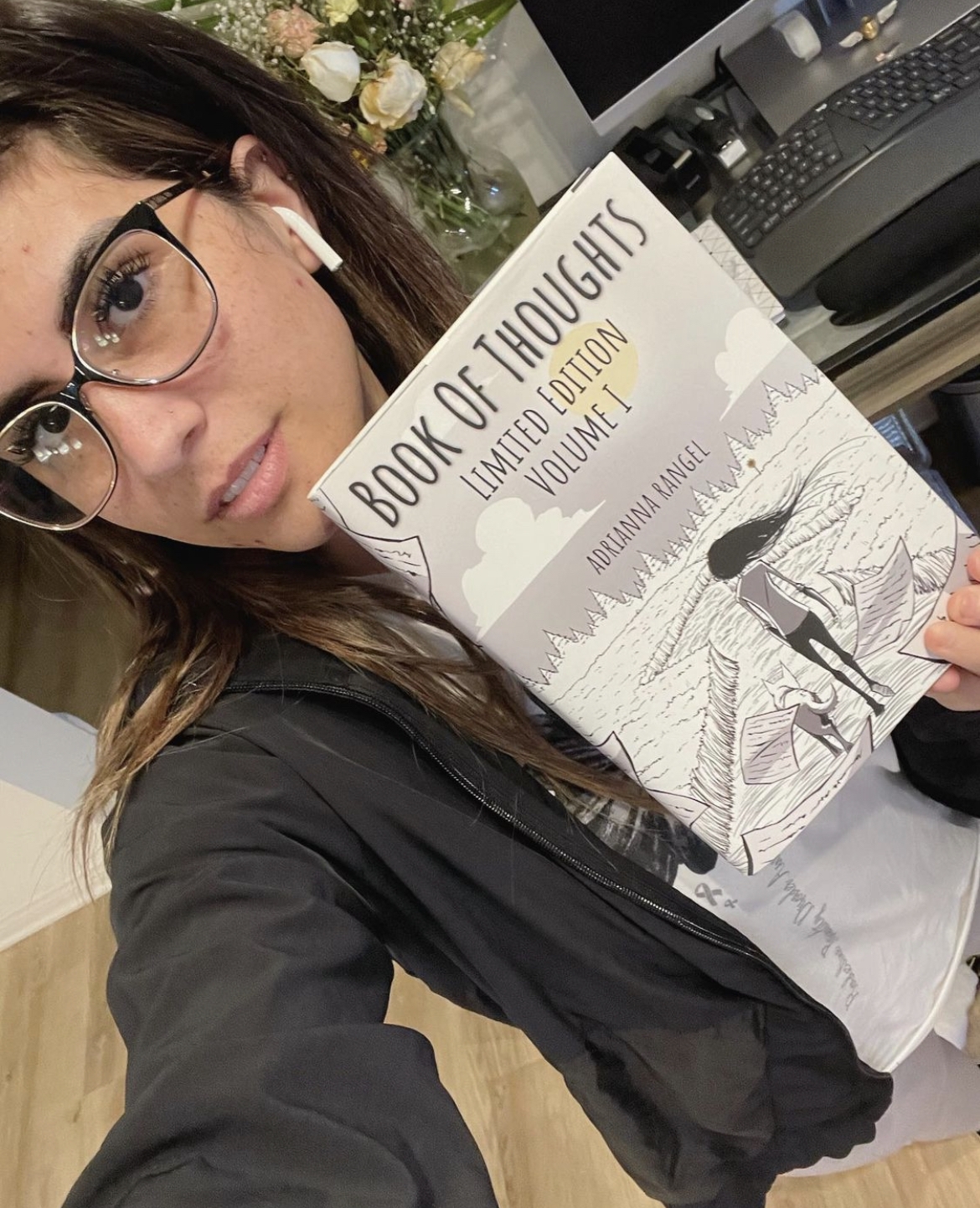
When I finally met with her, I told her I thought I had BPD and she immediately told me I didn’t. She kept throwing examples at me: “if you did, you would do x, y, and z.” I looked at her with tears in my eyes and I said, “I do.” She, again, immediately said I didn’t and that BPD mirrors depression and anxiety a lot of the times, so she’s not surprised why I would think that.
I felt unheard. I felt like she didn’t want to listen to me. I understood, and do understand, that I am no doctor, but to cut me off without letting me expatiate is invalidating. She refuted all of my feelings and all of my experience. At the time, I was diagnosed with:
Depression – Other, Atypical Depression
Generalized Anxiety Disorder
Social Anxiety
Post Traumatic Stress Disorder (PTSD)
Eating Disorder Not Otherwise Specified (EDNOS)
Obsessive Compulsive Disorder (OCD)
I also had various comments in my file regarding psychosis and the very frequent episodes I had experienced over the years. Note: I had been seeing the same psychiatrist since I was 20. At the time of this meeting, I was 24. My psychiatrist told me that I was already on an SSRI and a mood stabilizer, and that is how they treat BPD, so a diagnosis didn’t matter.
“READING [SADIE’S FAVORITE] IS AN EMOTIONAL ROLLERCOASTER.” -BETA READER
Sadie’s Favorite by BPD Beautiful creator Sarah Rose is a novel that tells the story of a girl lost, a woman recovered and the trauma in between.
TO ME, my diagnosis did matter.
TO ME, it would help explain what was wrong with me and why I felt these urges to self-harm.
TO ME, it would explain why I want to cheat whenever a boyfriend ignored me, rejected me, or couldn’t hangout that day.
TO ME, it would help explain why I never felt I belonged.
TO ME, it would help explain ME.
I told her that I was going to do the Mindfulness class since it mirrors (DBT). She told me it would greatly help me with my day to day life and suggested the Co-Dependency workshop as well.
. . . one month later . . .
I reached out to the resources that I had available to me through work. They were able to help me find a therapist who was well informed in mood disorders and relationships. I set up the consultation and I started seeing her once a week.
She determined from the DSM that I was experiencing a cyclothymic bipolar disorder and most likely C-PTSD. She then diagnosed me with those two mental illnesses. I told her that I thought I had BPD, and, she, also, immediately, turned that down and said I did not have that. However, she at least asked me why I thought that. She told me that bipolar type disorders are very similar to BPD and that’s why I saw similarities and believed that.
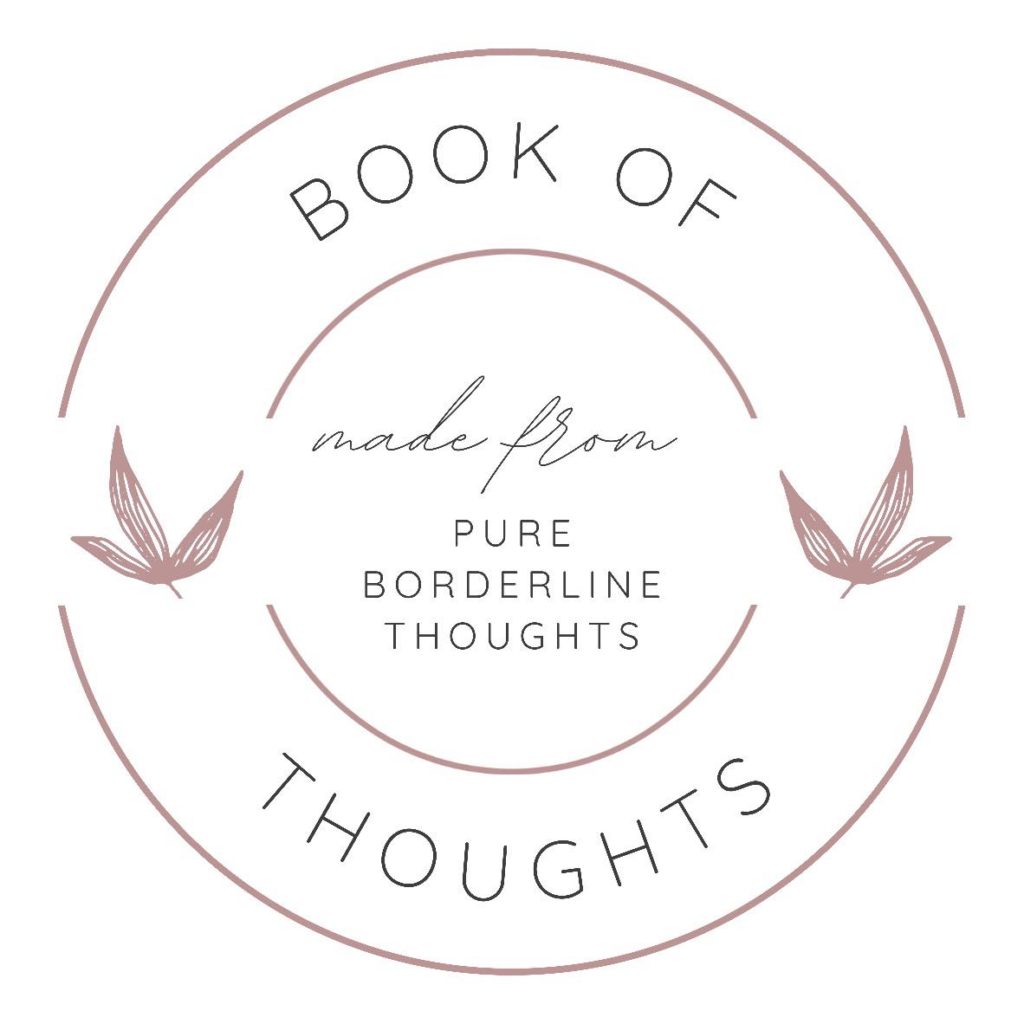
. . . two weeks later . . .
She stopped therapy with me.
. . . one year later . . .
I emailed my psychiatrist and I told her I was experiencing the same urges and circumstances that happened last year. She told me it was the PTSD and my body was trying to repeat the cycle. She told me I should go back to therapy and she could set me up with someone who specializes in PTSD. I told her I didn’t want to go back to therapy with that insurance and I would try to find someone on my own. I also asked her to increase my SSRI dose back to the normal amount because I could feel myself slipping.
Note: During the previous few months, I had been on and off nerve pain treatment for a nerve disorder I developed because of the effects of the anti-psychotics. My SSRI was lowered in order to prevent negative side effects from the nerve medication.
My psychiatrist told me to schedule an appointment with her and we would review everything when she got back from vacation. She told me she would be back in a week and ask to be fit in somewhere. I told her ok.
. . . three days later . . .
I spiraled. I cheated on my boyfriend (I started dating him two weeks after I broke up with my last one). I fell in love with someone else. I self-harmed. I cut my hair. I colored it blue. I was drinking again. I wasn’t eating. I was spiraling, and I didn’t care.
. . . six hours later . . .
I emailed my psychiatrist and told her that I wasn’t doing well. I told her again that I think I have BPD. I emailed her 6 pages and explained why.
no reply
—
. . . two weeks later . . .
I emailed her asking if she received my email.
no reply
. . . two weeks later . . .
I called to update her again and had to leave a message.
no reply
. . . four weeks later . . .
I called asking for a psychologist, so I could start therapy again.
no reply
. . . two weeks later . . .
I called to see if the office received my calls and messages. The receptionist said yes, but had to leave a message for my psychiatrist to put the request in to *approve* therapy
no reply
I waited, and waited, and waited. Sixteen weeks after my initial call with my psychiatrist, I was still waiting for help. I needed help and no one wanted to help me. It was then that I made the decision to change insurance plans and to find a new psychiatrist.
They abandoned me.
She abandoned me.
I was abandoned, once again.
I hated her.
Why wasn’t she responding to me?
Why didn’t she want to help me?
What changed?
She called me every year for my birthday.
She called me every time there was a holiday
She called me every semester for completion.
She called me for my BA and MA graduation.
What changed? Why, Why, Why, Why, Why.
I hated her.
Eventually, I found a handful of potential new psychiatrists. I called every one of them and left them the same message. I explained everything and told them that I thought I had BPD. Of the ten, only one called me back.
When she called me back, the first thing she said to me was, “You shouldn’t tell people you think you have BPD. They won’t call you back. I almost didn’t. We can do a consultation and if I decide to see you, we will have very strong boundaries.” I thanked her for calling me back and I met her a month later.
Our first meeting was me explaining why I believe I have BPD and what medications I’ve been on. I wrote out the exact email I sent to my old psychiatrist and gave it to her. She read it, nodded, and said she was keeping the 6 pages in my file. We did therapy every week from then on.
. . . two months later . . .
I saw my psychiatrist every week on Monday at 11:00 AM. Every week she listened to me talk. Every week she suggested tools and watched me time and time again not follow them. But today… today was the day, and it was different. It was the day she saw an outburst and diagnosed me.
It was 11:01 AM and I got there late. I started having racing thoughts because the door was locked. She told me to ring the door bell if it was ever locked, but I couldn’t get myself to do it. I couldn’t. What if I was rejected? What if she didn’t answer? Those scenarios were too scary to override her just answering the door. My thoughts kept racing and I was watching the time on my phone. 11:02 AM . . . 11:03 AM . . . 11:04 AM. . . It didn’t stop. The time kept moving and I wasn’t in the room. My breathing was now jagged. My heart was pounding in my chest. I could HEAR my heartbeat.
THUMP. THUMP. THUMP. THUMP. THUMP. THUMP.
I was shaking. “She’s going to drop me as a patient,” I thought to myself. I got up. I started pacing in the hallway. I walked back and forth, back and forth, back and forth. “I might as well go home. This is it,” I said to myself.
THUMP. THUMP. THUMP. THUMP. THUMP. THUMP.
The door opened. It was 11:08 AM. I was still shaking. I was dizzy. I couldn’t breathe. The time changed, 11:09 AM. Two patients walked out of the room. My psychiatrist looked at me. Before she even had a chance to take a breath, I immediately blurted out, “I’m not late! I promise! I was here! The door was locked! Are you going to fire me? I promise you I was here! I’m not late! I swear to you I wasn’t late! I couldn’t open the door! It was locked! I wasn’t late!”
Once I stopped talking so fast one would think I was talking gibberish, she says, “I know, I ******* patient. You’re ok. I’m ******** you. Why do ****************** on?” I froze. I couldn’t talk. It felt like I was going to pass out. My throat felt closed. I couldn’t breathe. I was dizzy. I just stood and looked at her.
After who knows how long, we walked into the room, and we sat down. I explained how I was feeling and apologized non-stop. She looked at me with the most perplexed facial expression and said, “Adrianna, I didn’t believe you at first, and I probably wouldn’t have if I didn’t see it myself, but I am diagnosing you with Borderline Personality Disorder.”
Until that moment, I had never been so speechless. I focused on her for what had to have been minutes. I looked down and then back up at her. “I finally feel heard. Thank you,” I barely muttered the words out and I started sobbing.
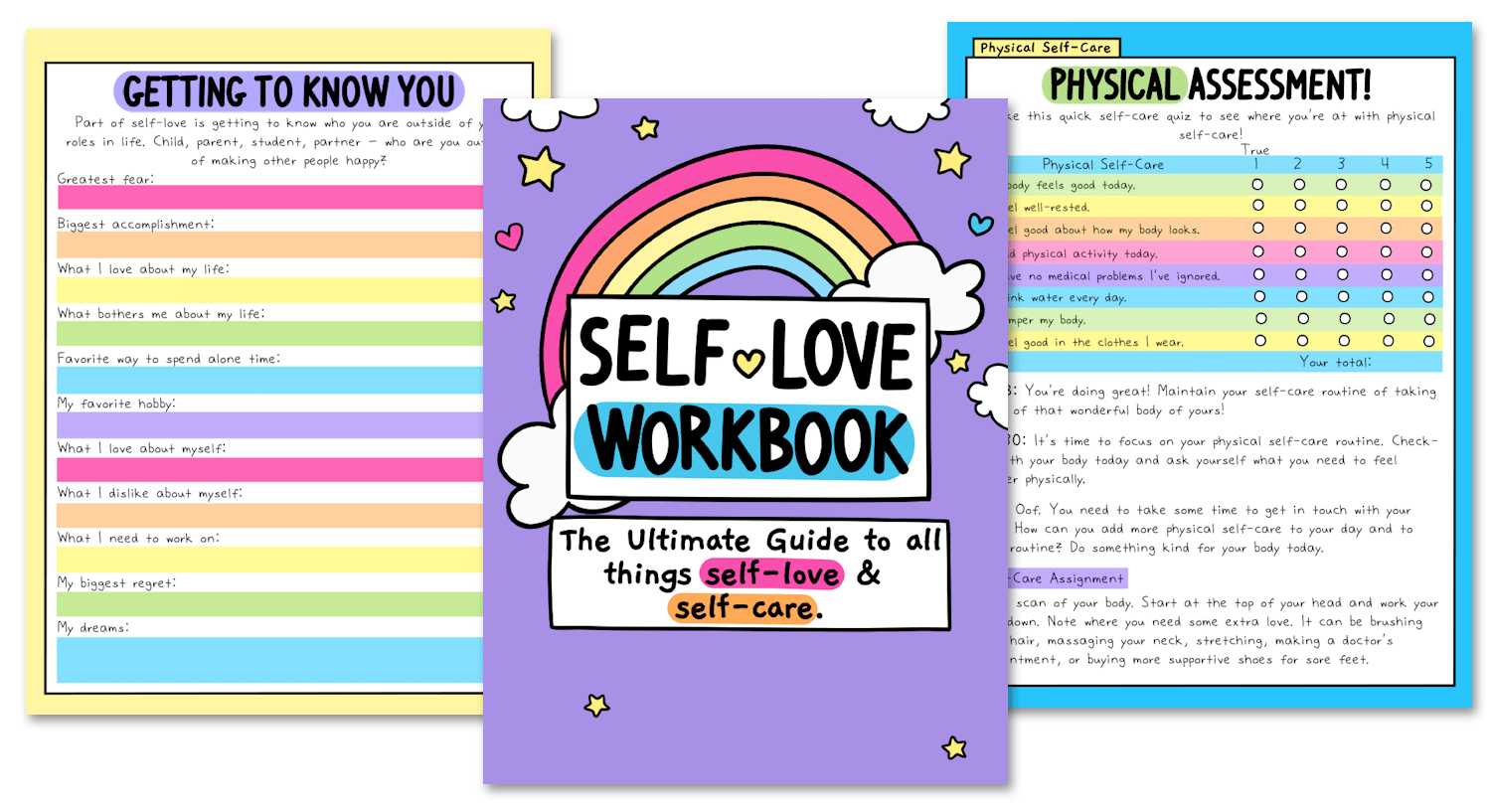
The Self-Love Workbook
This 103 page digital workbook comes with three different PDFs – full color, a version with no color backgrounds, and a black and white version (to save on printing costs). You get access to all three and you can print whichever one works for you!
DOWNLOAD NOW FOR $10Each .pdf is capable of being filled in digitally. With Adobe on your desktop computer or on an app like XoDo for your phone, you can type your answers into the .pdf and save your progress without ever needing to print it.
Can you tell us about your upcoming book about BPD titled Book of Thoughts? Is it more of a poetry book or a BPD memoir?
I believe it’s both. It’s a compilation of poems that are my deepest thoughts living with BPD. It describes situations I’ve been in. It describes boyfriend’s I’ve put up with. It describes thoughts I’ve endured.
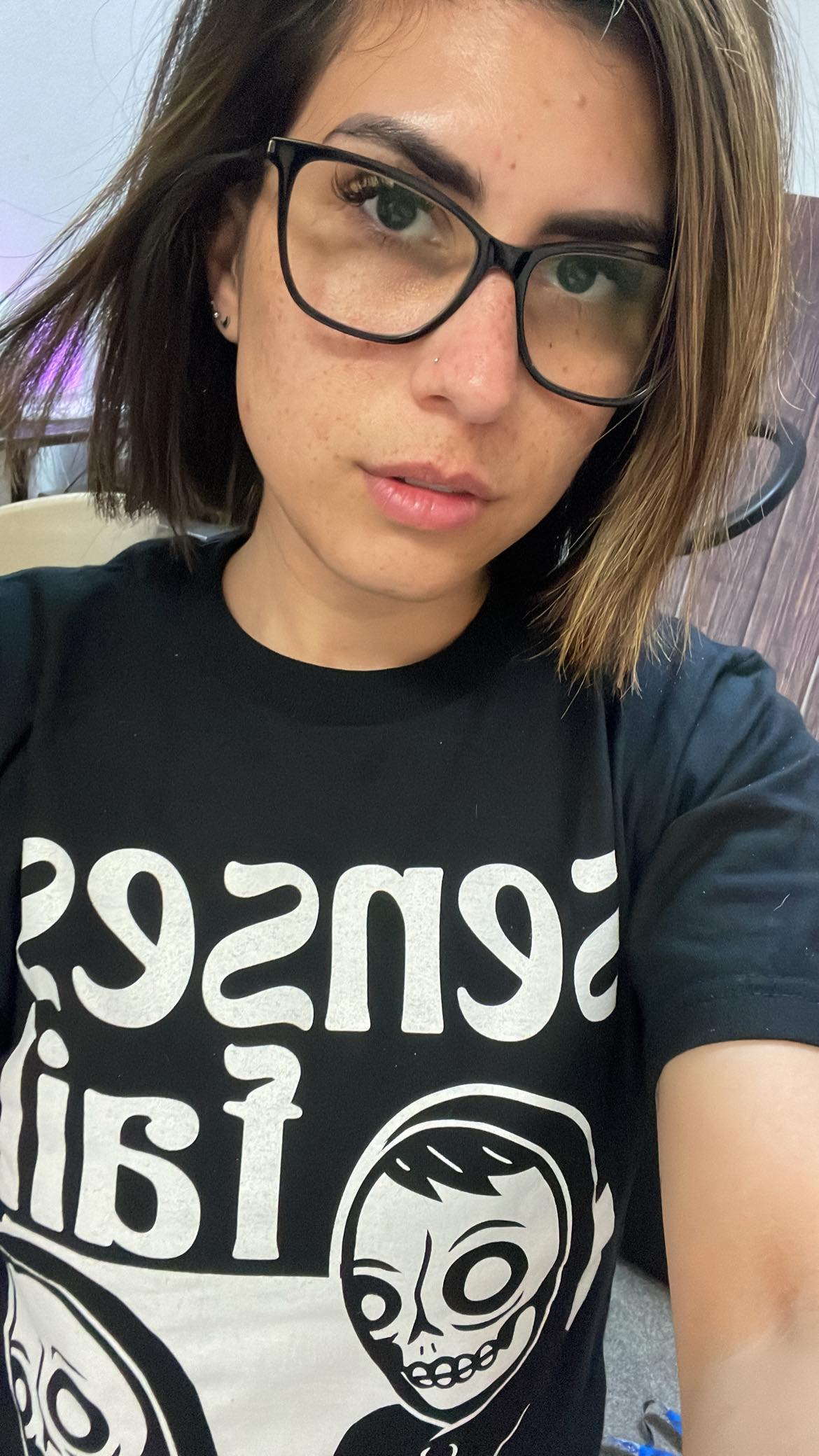
What was your thought process like when you were contemplating writing a book about BPD and creating a Kickstarter campaign?
I never thought I’d write a book. All of these poems are journal entries and thoughts I’ve written. I’ve been interested in poetry since I was in 9th grade, but journaled since 7th. I’ve always written in that form and I have no idea why.
The first type of “real” literature I read was lyrics and then poetry, so that might be where I get that format from.
My gosh. My favorite line… Right now… because I just went through a two days episode… it’s “BPD is my diagnosis, but I am fighting to not be defined by my BPD.”
What was your editing process like? How’d you decide what material to use and what material to leave out?
I really didn’t do much editing. I did more formatting than anything. I think my poems are real… they are ME… and I didn’t want to edit that to be in the construct of literary works. I’m here to show my experience, not to be defined by literature.
What plans do you have for the future? Do you have any other books about BPD in the works?
If this takes off, I think I do plan on writing an autobiography type novel OR even make Book of Thoughts Cont.
Apart from writing—what other projects, activities or hobbies do you do that you find therapeutic and helpful for your BPD?
Oh man. I love to hike, bike ride (even though I don’t have a bike right now. It was stolen on my birthday *upside down smiley*), showers, and then, unfortunately, my endless spending money.
What advice would you give to someone who thinks they have borderline personality disorder?
Research as much as you can and look for a consistency in symptoms. Write everything down and see a doctor. Granted, I haven’t had the best experience, BUT it’s important that a medical doctor sees you. While I knew I had it, and while I hyper-fixate on things so much until I know absolutely everything possible, it still didn’t mean I was correct about my diagnosis. I was, but that doesn’t mean self diagnosis is something I agree with. Also, don’t back down. Not every psychiatrist is going to listen to you. But when you do find someone, you’ll feel it.
What advice would you give to a person that loves someone with BPD?
Research and inform yourself as much as you can. Listen to UNDERSTAND us, not to RESPOND to us. It’s not our fault. All we want is to be loved. I know there are things about the disorder that outsiders may not like, but I promise, we don’t like it either. Our actions, to us, are reasonable.
You know yourself better than anyone else – remember that. And you’re not alone. I promise. You’ll feel alone, and you’ll tell yourself you’re alone, but you are NOT alone.
BPD Resources
BPD Characters: Read the first 6 chapters of Sadie’s Favorite – an upcoming novel by Sarah Rose, creator of BPD Beautiful.
Get 20% off your first month of BetterHelp. Get matched with a licensed therapist within 48 hours. Subscriptions as low as $65/week, billed every 4 weeks. Cancel anytime.
Manage your BPD symptoms with a printable workbook.
See our recommended list of books about BPD.
Start a Discussion
If you have a similar experience facing BPD stigma or know of similar books about BPD, please tell us about it in the comments. I’d love to hear your thoughts or story! We’re in this together.
Pin This Post
Liked this post? Please help support BPD Beautiful and spread borderline personality disorder awareness by pinning it to Pinterest.
